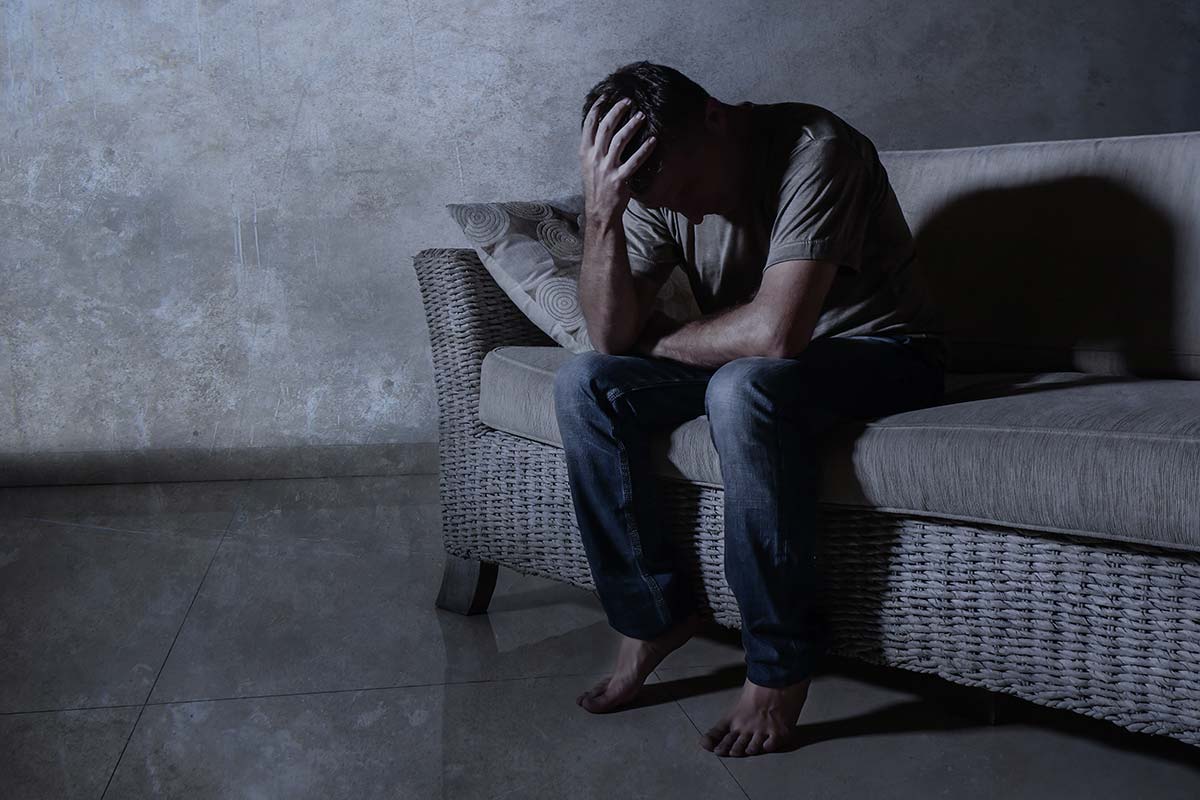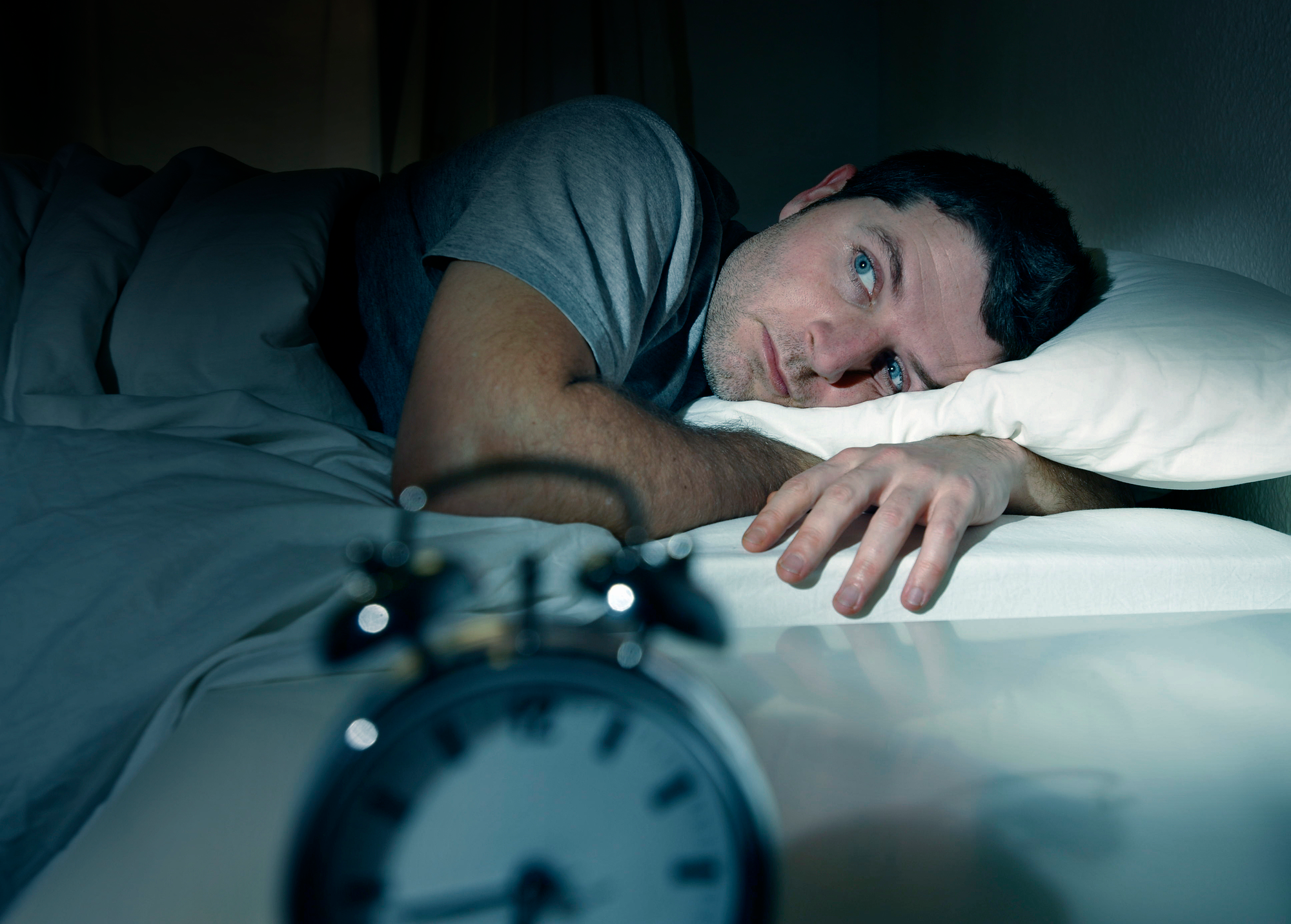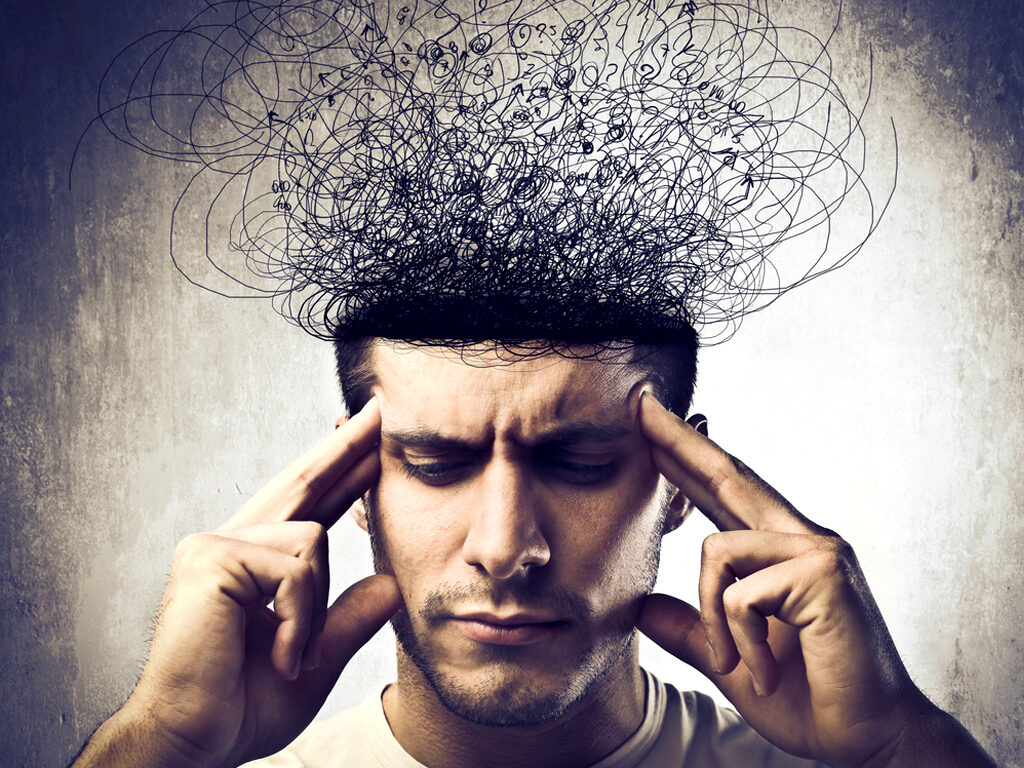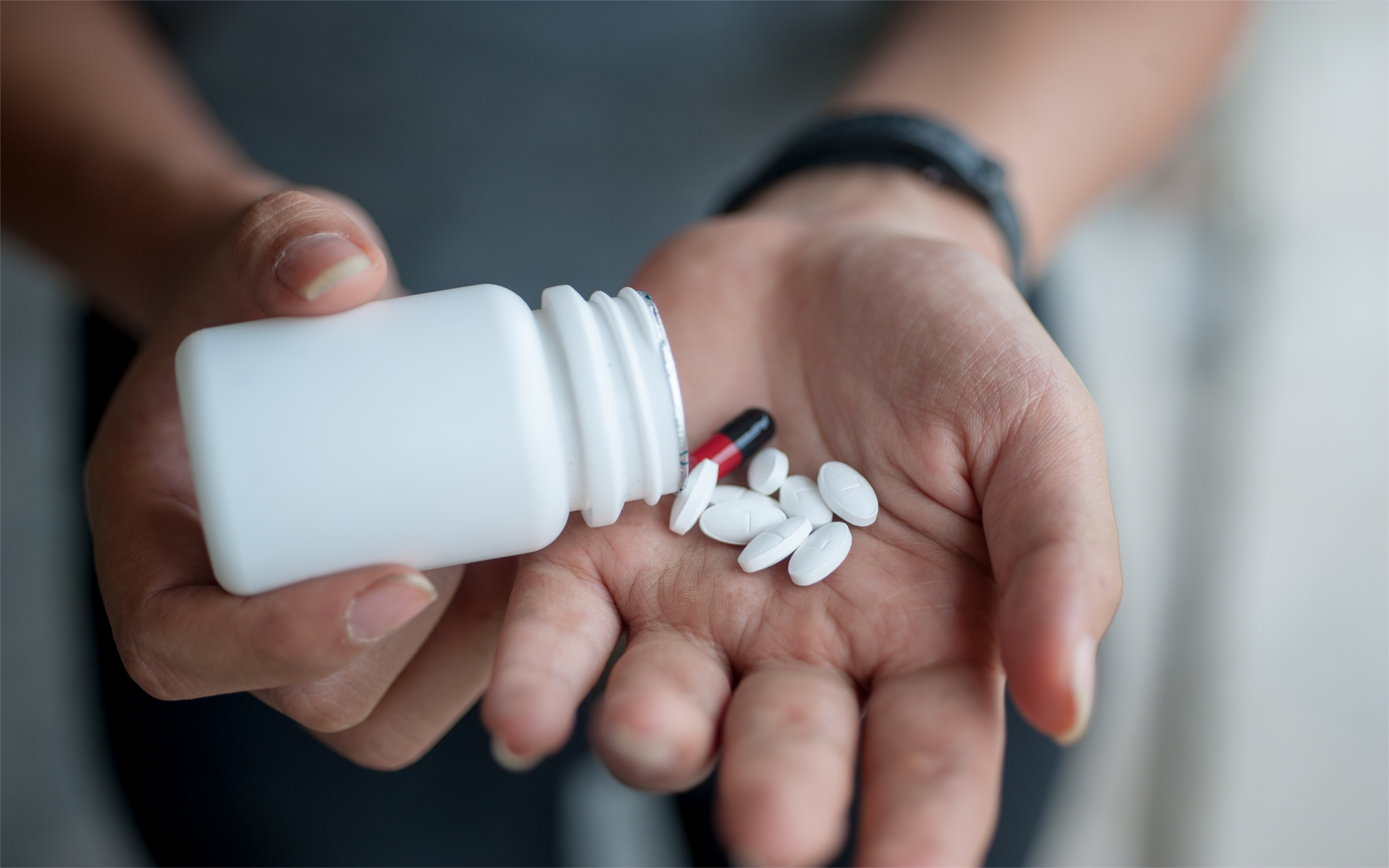Depression
Do you feel sad, hopeless, or less interested in the activities you once loved? Depression is a common mental health condition that affects more than 17 million American adults.
What is depression?
Depression, or major depressive disorder, is a common but serious mood disorder that can negatively impact the way you think, feel, or act. Depression is more than just feeling sad. Many people struggling with depression experience physical symptoms such as aches and pains, extreme fatigue, and sudden loss of interest in activities they once enjoyed.
What are the symptoms of depression?
Like many mental health and mood disorders, depression symptoms vary from person to person and can range from mild to severe. Some of the most common symptoms of depression are:
• Sadness, hopelessness, or emptiness
• Slowed thinking
• Trouble concentrating
• Forgetfulness
• Decision-making problems
• Weight loss or weight gain
• Aches and pains, including headaches
• Irritability or agitation
• Insomnia or oversleeping
• Suicidal thoughts
• Anxiety
• Angry outbursts
Untreated depression often leads to a number of problems in your day-to-day life. Many people with depression struggle with their work performance, physical health, and maintaining healthy relationships.
How is depression diagnosed?
It’s important to rule out other conditions before you are diagnoses you with depression. They may recommend a full physical exam to make sure an underlying condition isn’t causing your symptoms.
Serenity Psychiatry can order a blood test to make sure your thyroid functions properly, as thyroid disease often mimics symptoms of depression like fatigue and weight fluctuations.
Finally, Serenity Psychiatry performs a full psychiatric evaluation in which they ask you questions about your emotions, behaviors, thoughts, symptoms, and feelings.
How is depression treated?
A multimodality approach to depression treatment is best. Some of the most common treatments recommended are:
Psychotherapy
Psychotherapy, or talk therapy, is an effective treatment that can help you manage or overcome depression. During these sessions aim to help you find better ways to cope with your depression, set realistic goals, identify negative thought patterns or behaviors, and regain a sense of control and joy in your life.
Medication
There are many different medications used to treat depression, including selective serotonin reuptake inhibitors (SSRIs) — typically the first medication physicians prescribe to treat depression — serotonin-norepinephrine reuptake inhibitors (SNRIs), atypical antidepressants, and tricyclic antidepressants.
ADHD
Around 8.4% of children and 2.5% of adults have attention-deficit/hyperactivity disorder (ADHD) — and many don’t know it.
What is ADHD?
Attention-deficit/hyperactivity disorder (ADHD) is a common mental disorder that affects children and adults of all ages. While ADHD is typically diagnosed during childhood, many adults struggle with undiagnosed ADHD for years before seeking help.
Characterized by scattered focus, hyperactivity, impulsivity, and more, ADHD affects the prefrontal cortex of the brain — the area responsible for planning and decision-making.
What are the symptoms of ADHD?
Your ADHD symptoms can vary depending on your age, sex, and the type of ADHD you have. There are three main types of ADHD: inattentive type, hyperactive/impulsive type, and the combined type.
Inattentive type
You may have inattentive ADHD if you experience one or more of the following symptoms for more than five months (or six months if you’re under the age of 17):
• Not paying close attention to details
• Easily distracted
• Struggling to follow instructions
• Problems staying on task
• Disorganization
• Avoiding tasks that require extra mental effort
• Forgetfulness
• Trouble paying attention during conversation
Hyperactive/impulsive type
If you experience one or more of the following symptoms for more than five months (or six if you’re under the age of 17), you may have hyperactive/impulsive ADHD:
• Struggling to stay seated
• Constant fidgeting
• Talking excessively
• Loud voice/blurts in class
• Frequently interrupting others
• Struggling to relax quietly
Combined type
Any combination of the above inattentive and hyperactive/impulsive symptoms is considered combined ADHD.
It’s important to note that ADHD symptoms often go unnoticed in girls, as they’re less likely to be noticeably hyperactive. Instead, many girls seem more “zoned out” or often daydream in class or at work.
How is ADHD treated?
Medication
Some of the most common medications to treat ADHD in adults and children are central nervous system stimulants like Adderall®, Desoxyn®, and Ritalin®. Other non-stimulant medications include Strattera® and Qelbree®.
Therapy
Behavior therapy can help you or your child change the way you respond to certain situations, tasks, and responsibilities. While there are many ways to conduct behavior therapy, one of the most common in children with ADHD is to implement a reward system for positive behavior and completed tasks.
Psychotherapy gives you or your child the opportunity to open up about coping with ADHD. This type of therapy is especially effective at changing behavior patterns toward adults and authority figures.
Social skills training
ADHD often affects your ability to form meaningful, long-lasting friendships. Social skills training can help you or your child play and work better with others. It can also help you learn to respond to certain situations with more appropriate behaviors, such as waiting for your turn and asking for help.
Without a proper diagnosis and treatment plan, ADHD can negatively impact your ability to enjoy school, hold a steady job, and form long-term relationships with others.
PTSD
It’s normal to feel anxious or vulnerable after a traumatic event, but if you’re experiencing flashbacks and uncontrollable thoughts for more than a few months, you may have post-traumatic stress disorder (PTSD).
What is PTSD?
Post-traumatic stress disorder (PTSD) is a serious condition that can develop after you experience or witness a traumatizing event. While most people associate PTSD with military personnel, many individuals are triggered by violent attacks, childhood abuse, sexual abuse, witnessing the death of a loved one, and more.
Most people have trouble coping after a traumatic event, but time, self-care, and therapy can help them adjust and find a new sense of normal. If you’re still experiencing nightmares, suicidal thoughts, or flashbacks several months after the event, then you may have PTSD.
What are the symptoms of PTSD?
If you experience one or more of the following PTSD symptoms for longer than a few months, call KMG Psychiatry to speak with a board-certified psychiatrist:
• Flashbacks or reliving the event
• Intrusive thoughts and memories
• Suicidal thoughts
• Avoiding places that remind you of the event
• Loss of interest in activities you once enjoyed
• Difficulty feeling positive
• Memory loss
• General hopelessness
• Insomnia
• Trouble concentrating
• Irritability
• Angry outbursts
• Guilt or shame
PTSD symptoms typically begin within a month or two after the event, but can also develop years after. Over time, untreated PTSD can affect your ability to perform well at work and form meaningful relationships.
How is PTSD diagnosed?
A PTSD diagnosis requires witnessing or experiencing an event that involves a threat of death, extreme violence, or serious injury. This means you must:
• Experience a traumatic, life-changing event
• Witness death or extreme violence
• Learn a close loved one was involved in a violent event
• Be involved in the event, such as being a first responder or victim
Joline Brotzman, PMHNP-BC, may recommend a full physical exam to rule out any other conditions before he performs a comprehensive psychological evaluation. This information, along with your medical and family history, can help determine the right diagnosis for you.
How is PTSD treated?
Psychotherapy
Also called talk therapy, psychotherapy aims to help you cope with and manage PTSD. Regular therapy can help you work through fear and anxiety related to the traumatic event so you can lead a productive, fulfilling life. The most common type of therapy used to treat PTSD is cognitive-behavioral therapy (CBT), which changes unhelpful thought patterns and behaviors into positive ones.
Another common type of therapy is prolonged exposure therapy, which involves having the patient relive the traumatic event or exposing them to anxiety-inducing situations in a safe, controlled environment. Over time, this can help you feel more comfortable about situations that make you uncomfortable or frightened.
Medication
Providers typically prescribe antidepressants to treat PTSD, but certain blood pressure medications can also reduce PTSD symptoms like nightmares and flashbacks.
Anxiety
Everybody feels anxious before starting a new job, taking a big test, or going on a first date, but anxiety disorders are different. An untreated anxiety disorder makes it difficult to complete routine tasks, form meaningful relationships, and more. An estimated 19.1 % of U.S. adults have had an anxiety disorder in the past year.
What is anxiety?
Anxiety is a normal reaction to stress that can keep you alert in dangerous situations and encourage you to be productive at school or work. While anxiety is common and perfectly normal in most situations, if you feel excessive fear or apprehension in your everyday life, you may have an anxiety disorder.
Are there different types of anxiety disorders?
There are several different types of anxiety disorders, and the most common are:
Generalized anxiety disorder
Generalized anxiety disorder is characterized by feelings of excessive worry and fear that interferes with your daily activities. Many people with generalized anxiety disorder experience:
• Frequent muscle tension
• Trouble concentrating
• Insomnia
• Restlessness
• Fatigue
While your worry can be directed toward finances, relationships, health, and job security, many people experience this type of anxiety over small tasks like chores, school work, or appointments.
Social anxiety disorder
A person with a social anxiety disorder has a feeling of humiliation or embarrassment around other people that impacts their ability to form friendships and connect with others. You may find yourself avoiding meeting new people, feeling physically ill at the thought of public speaking, or fearful of eating and drinking in public.
Panic disorder
Panic disorders are characterized by overwhelming physical and psychological discomfort that results in panic attacks. These sudden attacks may include one or more of the following symptoms:
• Sweating
• Shaking
• Dizziness
• Heart palpitations
• Nausea
• Chills
• Hot flashes
• Tingling or numbness
• Feeling detached
Panic attacks can be frightening if you’ve never had one. Some people mistake them for heart attacks, so it’s important to know the warning signs.
Phobias
Phobias are excessive fear or worry toward specific objects, situations, or activities. Most people with phobias are aware that their fear isn’t normal, but they can’t overcome their excessive worry. As a result, many avoid what they fear altogether.
How is anxiety treated?
How your anxiety is treated depends on which type you have. Two of the most common anxiety treatments include:
Therapy
Psychotherapy, or talk therapy, gives you the chance to understand your emotional response to anxiety-inducing situations and help you figure out why you respond the way you do. Cognitive-behavioral therapy helps you change problematic thought patterns into healthier ones. Meanwhile, behavioral therapy helps you combat unhealthy behaviors.
Medication
Medication does not help get to the root of your anxiety, but it can significantly reduce your symptoms. Some of the most common medications for anxiety include antidepressants, anxiolytics, and anticonvulsants.
Untreated anxiety can negatively affect your daily life, leading to stress, depression, and more.
Bipolar Disorder
Approximately 5 million people in the United States suffer from bipolar disorder, a mental illness that causes a dramatic shift in a person’s mood and ability to think clearly.
What is bipolar disorder?
Bipolar disorder is a mental illness characterized by extreme mood swings, including intense emotional highs (mania or hypomania) and deep emotional lows (depression). These episodes may occur occasionally or several times a year; it varies from person to person.
What are the symptoms of bipolar disorder?
Your bipolar disorder symptoms depend on whether you’re experiencing a manic episode or a depressive episode.
During a manic episode, you may:
• Have a lot of energy
• Spend more money
• Have unprotected sex
• Feel generally reckless
• Do too many things at once
• Feel jumpy
• Become more easily irritable
• Have insomnia
• Become more active
Hypomania is a less severe form of mania. If you are experiencing a hypomanic episode, you may feel positive, energetic, and more productive. When left untreated, hypomania can lead to extreme mania or depression.
During a depressive episode, you may:
• Feel hopeless or extremely sad
• Have trouble concentrating
• Feel empty
• Become forgetful
• Experience extreme fatigue
• Overeat or undereat
• Decrease your activity levels
• Contemplate suicide
• Feel worried
A depressive episode makes simple tasks like getting dressed, taking a shower, or interacting with friends or coworkers seem like a daunting challenge.
How is bipolar disorder diagnosed?
A proper diagnosis is crucial for treating bipolar disorder. To rule out other conditions, Serenity Psychiatry may recommend a physical exam. In some cases, thyroid disease can mimic the symptoms of bipolar disorder and other mental health conditions.
Next, Serenity Psychiatry will perform a full mental health evaluation. During this exam, they ask you questions about your mood, behavior, and feelings. They may even ask your permission to gather additional information from your friends, family, and other people with whom you have daily interactions.
Mood charting — keeping a daily record of your mood, sleep patterns, emotions, and more — not only helps Serenity Psychiatry determine the right diagnosis for you, but it also gives them the information they need to plan your bipolar disorder treatment.
How is bipolar disorder treated?
It’s often challenging for people with bipolar disorder to find the right medication. You may need to try several different medications before you find the best one for you. Some of the most common bipolar disorder medications include:
• Antidepressants
• Anti-anxiety medication
• Mood stabilizers
• Atypical antipsychotics
Psychotherapy
Cognitive-behavioral therapy (CBT), a form of psychotherapy, strives to change cognitive distortions and behaviors so you can feel more emotionally regulated, productive, and able to solve problems on your own. When combined with effective medication, CBT can replace negative, unhealthy behaviors with positive ones.
Other forms of therapy used to treat bipolar disorder include:
• Psychoeducation
• Family-focused therapy
• Interpersonal and social rhythm therapy
Sleep disorders
Frequent poor sleep affects your ability to work, function, and think clearly. Whether you struggle to fall or stay asleep.
What are sleep disorders?
Sleep disorders are problems with the amount or quality of sleep you get each night. Over time, sleep disorders can affect your ability to function during the day and exacerbate physical and mental health conditions such as anxiety, depression, cardiovascular disease, and obesity.
Are there different types of sleep disorders?
Insomnia
Insomnia is a common sleep disorder characterized by problems falling asleep, staying asleep, or waking up way too early every morning. About one in three people in the United States experiences poor sleep at least once a week.
In general, insomnia is a sign of an underlying problem, such as anxiety or depression, stress, poor diet, or lifestyle habits.
Sleep-disordered breathing
Sleep-disordered breathing commonly refers to sleep apnea, a condition that affects your ability to breathe normally at night. If you have sleep apnea, you may stop and start breathing up to 100 times or more in a single night.
Narcolepsy
Narcolepsy is a serious sleep disorder characterized by extreme daytime fatigue and sudden attacks of sleep. What makes narcolepsy frightening is that an attack of sleep can happen at any time, even when you’re driving. Many people with narcolepsy experience sudden loss of muscle tone and sleep paralysis.
Other conditions associated with sleep quality include depression, anxiety, alcohol addiction, and bipolar disorder.
How are sleep disorders diagnosed?
A comprehensive physical exam is needed to properly diagnose certain sleep disorders, such as sleep apnea and narcolepsy.
For a narcolepsy diagnosis, you may also need a polysomnogram and sleep latency tests, in addition to sleep disorder questionnaires such as the Epworth Sleepiness Scale, which measures daytime sleepiness.
How are sleep disorders treated?
Therapy
Cognitive behavioral therapy (CBT) to help change negative thought patterns and behaviors that may prevent you from falling or staying asleep. CBT is especially helpful if you suffer from insomnia, whether or not your sleep problems stem from an underlying issue such as depression or anxiety. Because CBT doesn’t have the side effects that medications have, it can provide lasting relief to your sleep concerns.
Medication
The type of medication you use depends on your sleep disorder. If you suffer from narcolepsy or sleep apnea modafinil, helps minimize daytime sleepiness. Meanwhile, certain antidepressants can help you fall and stay asleep if you have insomnia. When combined with routine therapy, medication can help improve your sleep quality.
Panic Disorder
Panic disorders affect around 2.7% of Americans every year.
What are sleep disorders?
A panic disorder is a type of anxiety disorder that causes extreme and debilitating fear and physical symptoms. These symptoms typically occur in out-of-the-blue attacks that aren’t necessarily connected to a specific worry or stressor.
Panic disorders range in severity. For example, some people only experience one or two panic attacks before their symptoms disappear, while others have recurring attacks that interfere with their quality of life.
What are the warning signs of a panic disorder?
A panic disorder causes panic attacks, which combine mental and physical symptoms, such as:
• Intense fears and worries
• Sense of impending doom
• Fears of loss of control or death
• A feeling of detachment from reality
• Trembling
• Sweating
• Shortness of breath
• Chest pain
• Nausea or abdominal cramping
• Headaches
• Dizziness or lightheadedness
Panic attacks aren’t usually dangerous, but they’re frightening. Many patients say that they feel like they’re having a heart attack or dying when they have a panic attack.
How are panic disorders treated?
Medicine
Your provider might prescribe medication to regulate your brain chemistry and alleviate some of your anxious thoughts and other symptoms. Anti-anxiety medication can take a few weeks to take effect, so remain patient.
Counseling
During counseling, you have an opportunity to explore your anxious feelings and fears. You and your counselor might work on techniques to recognize the thoughts and feelings that warn of a panic attack and methods to self-soothe before the attack strikes.
Thought Disorders (i.e. Schizophrenia)
Schizophrenia is an uncommon and widely misunderstood mental health condition, affecting less than 1% of the American population.
What is schizophrenia?
Schizophrenia is a chronic brain disorder that causes various symptoms ranging from hallucinations to disorganized thinking. Contrary to some common misconceptions, schizophrenia doesn’t cause multiple personalities.
The condition usually emerges in early adulthood and is more common in men than in women. While there isn’t a cure for schizophrenia, the disease is manageable when treated, and you can lead a healthy and independent life.
Schizoaffective disorders combine the symptoms of schizophrenia with mood disorders such as depression or mania.
What are the symptoms of schizophrenia?
Schizophrenia can cause a wide range of symptoms classified as positive, negative, or disorganized.
Positive symptoms are abnormal additions to the way you perceive the world. They include visual and auditory hallucinations, paranoia, and distorted perceptions, beliefs, and behaviors.
Negative schizophrenia symptoms, on the other hand, detract from your ability to interact with your environment. These symptoms include a decreased ability to communicate, plan, or find pleasure.
Disorganized symptoms include confused or disordered thoughts and speech, reduced ability to think logically, and abnormal behaviors or movements.
How are schizophrenia and schizoaffective disorders treated?
The first step in treating schizophrenia or a schizoaffective disorder is receiving an accurate diagnosis. The Serenity Psychiatry provides a comprehensive evaluation and testing to identify the condition causing your symptoms.
Medication
Prescription medication is often critical in treating schizophrenia. Antipsychotic drugs can regulate your brain chemistry and reduce your symptoms. Medicine can also lower your risk of having an acute attack of your symptoms.
Counseling
For example, many patients with schizophrenia or a schizoaffective disorder benefit from cognitive behavioral therapy.
Integrative treatments
You might also benefit from lifestyle adjustments and alternative therapies to enhance your overall health and well-being. Following a nutrient-rich diet, getting regular physical activity, and following a daily routine are often helpful.
Your provider might recommend some vitamins or supplements. Some studies show that vitamins C, D, E, and some of the B vitamins can help reduce schizophrenic symptoms.
Substance Use Disorders
What is Substance Use Disorders?
Substance use disorder (SUD) is a complex condition in which there is uncontrolled use of a substance despite harmful consequences. People with SUD have an intense focus–sometimes called an addiction–on using a certain substance(s) such as alcohol, tobacco, or other psychoactive substances, to the point where their ability to function in day-to-day life becomes impaired. People keep using the substance even when they know it is causing or will cause problems.
Repeated substance use can cause changes in how the brain functions. These changes can last long after the immediate intoxication wears off. Intoxication is the intense pleasure, euphoria, and calm that is caused by the substance; these symptoms are different for each substance. With continued use of a substance, tolerance can develop, where someone may require larger amounts in order to fell these effects. Additionally, discontinuing use can lead to symptoms of withdrawal and intense cravings to return to use, often experienced as anxiety.
People with a substance use disorder may have distorted thinking and behaviors. Changes in the brain’s structure and function are what cause people to have intense cravings, changes in personality, abnormal movements, and other behaviors. Brain imaging studies show changes in the areas of the brain that relate to judgment, decision-making, learning, memory, and behavioral control.
What are the Symptoms of Substance Use Disorders?
Symptoms of substance use disorder are grouped into four categories:
• Impaired control: the experience of a craving or strong urge to use the substance; desire or failed attempts to cut down or control substance use.
• Social problems: substance use causes failure to complete major tasks at work, school or home; social, work or leisure activities may be cut back or given up entirely.
• Dangerous use: substance is used in unsafe settings; continued use despite known problems.
• Drug effects: tolerance (need for larger amounts to get the same effect); withdrawal symptoms (different for each substance).
Many people experience substance use disorder along with another psychiatric disorder. Another psychiatric disorder can, but does not necessarily, precede another psychiatric disorder. It is also possible that the use of a substance may trigger or worsen another psychiatric disorder.
What are the treatments for Substance Abuse Disorders?
Medications
Medications are used to control cravings, relieve symptoms of withdrawal, and to prevent relapses. Depending on the substance of abuse potential medications treatments include Naltrexone, Vivitrol, Antabuse, Acamprosate, Clonidine, Suboxone and Subutex.
Psychotherapy
Psychotherapy can help individuals with SUD better understand their behavior and motivations, develop higher self-esteem, cope with stress, and address other psychiatric problems.
A person’s recovery plan is unique to the person’s specific needs and may include strategies outside of formal treatment. These may include:
• Hospitalization or outpatient guidance for medical withdrawal management (detoxification).
• Therapeutic communities (highly controlled, drug-free environments) or sober houses.
• Outpatient medication management and psychotherapy.
• Intensive outpatient programs.
• Residential treatment (“rehab”).
• Mutual-aid groups (Alcoholics Anonymous, Narcotics Anonymous, SMART Recovery).
• Self-help groups that include family members (Al-Anon or Nar-Anon Family Groups).
Dental Website that’s gonna
shake the game rules up.
We use only the best quality materials on the market
in order to provide the best products to our patients.










